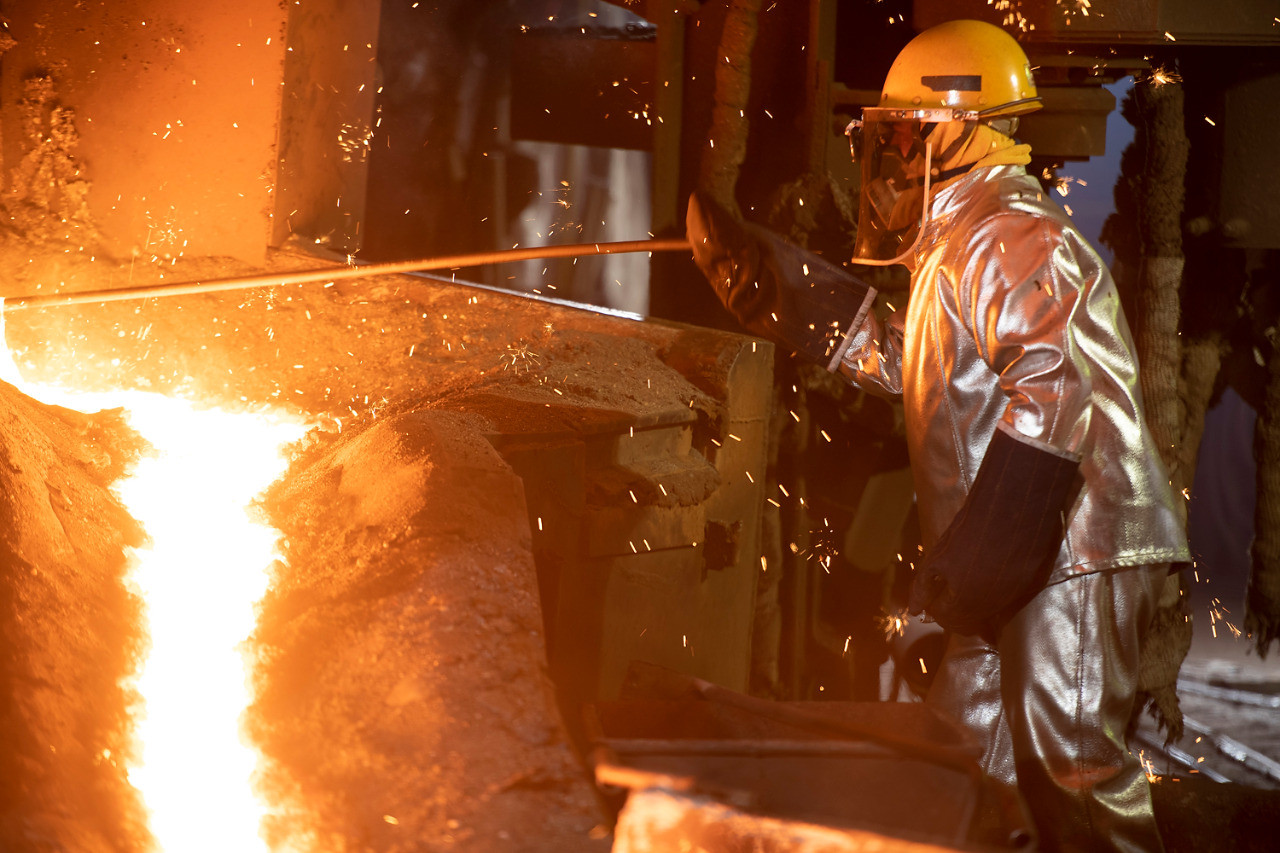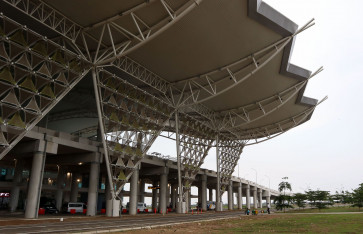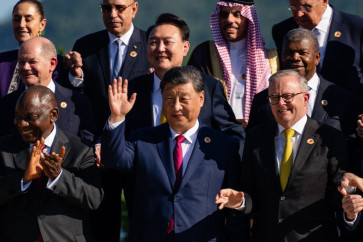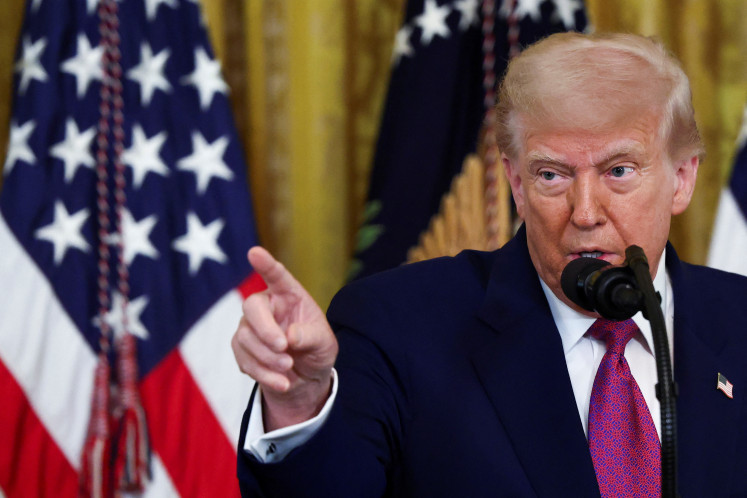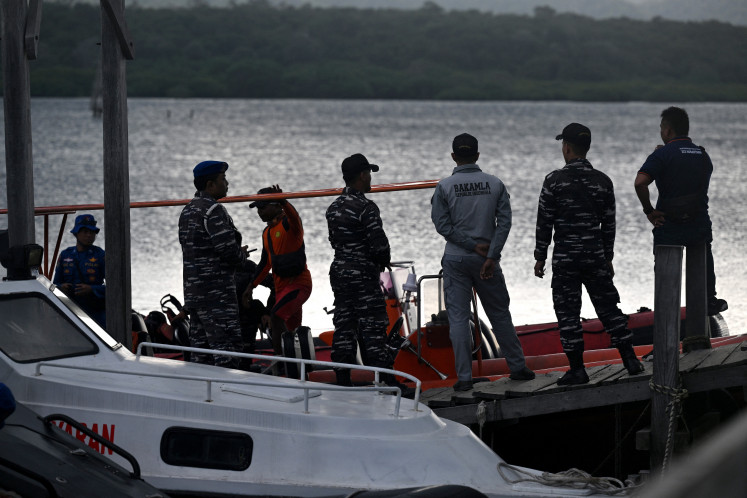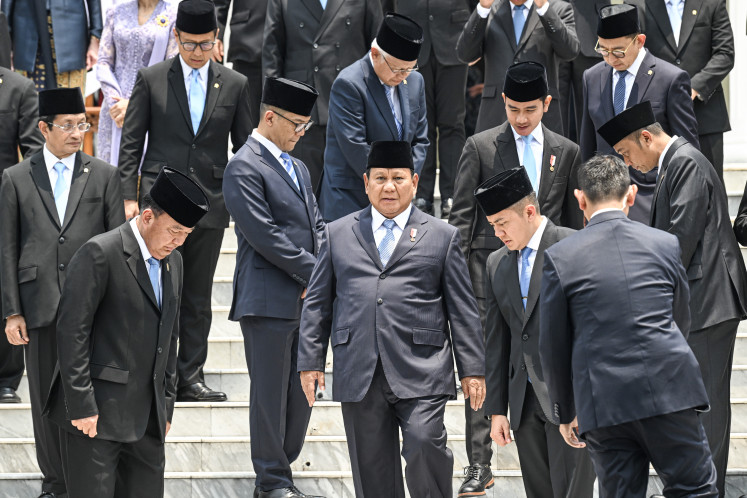Popular Reads
Top Results
Can't find what you're looking for?
View all search resultsPopular Reads
Top Results
Can't find what you're looking for?
View all search resultsGovernment maps rare earth reserves for industry goals
Rare earth elements are used in a long list of products including high-tech electronics, EV batteries and wind turbines.
Change text size
Gift Premium Articles
to Anyone
T
he government has laid out plans to map Indonesia’s rare earth element reserves as part of a wider plan to develop downstream rare earth industries.
Energy and Mineral Resources Ministry Mining Director General Ridwan Djamaluddin said on Monday that the ministry had identified eight locations that contained rare earth reserves, with plans to explore more areas up until 2024.
“All eight are still in the early exploration stage,” he told House Commission VII, which oversees energy and mineral resources, at a hearing in Jakarta.
Among the eight locations are Bangka Belitung, North Sumatra and West Kalimantan with rare earth mineral reserves amounting to roughly 207,397 tons, 19,917 tons and 219 tons, respectively.
As a comparison, China, the world’s largest rare earth miner, has a total of 44 million tons of rare earth minerals reserves.
Mapping rare earth reserves is part of the government’s bigger plan to develop downstream rare earth industries with an emphasis on the defense and renewable energy industries.
Read also: Govt to develop rare earth processing
As many as 17 minerals are categorized as rare earth elements, which have a wide variety of applications, including in automobiles, consumer electronics and renewable energy power plants. They can be found in hybrid electric motors and generators, nickel-metal hydride batteries, diesel fuel, mobile phones, computer and television screens as well as optical lenses.
The energy ministry plans to conduct a more detailed exploration of rare earth reserves in several areas, including Ketapang in West Kalimantan, Sibolga in North Sumatra and Pegunungan Tiga Puluh in eastern Sumatra, by 2024.
Exploration efforts are currently carried out by state-owned tin miner PT Timah and private companies, including mining companies PT Mitra Stania Prima and PT Stanindo Inti Perkasa, according to Ridwan.
State-owned Bank Mandiri industry analyst Ahmad Zuhdi Dwi Kusuma said the domestic rare earths market would “sooner or later” grow alongside the development of the domestic renewable energy industry.
However, he noted that Indonesia-produced rare earths would face stiff competition from Chinese counterparts, which were much more readily available. Indonesia would need to specialize its rare earth production to gain a competitive advantage.
“There are many kinds of rare earths. These are essentially rare metals, they are useful, but not used in great quantities,” he told The Jakarta Post on Tuesday.
Global rare earth mine production is estimated at 280,000 tons in 2021, up 16 percent annually, according to the United States Geological Survey
Processing raw materials into finished products could boost nontax state revenue from the mining industry from an average of Rp 40 trillion (US$2.78 billion) per year to Rp 1 quadrillion per year, according to energy ministry estimates.
Indonesia kicked off its mineral downstreaming plans by enacting a landmark nickel ore export ban starting 2020 to force miners to develop nickel processing facilities. Nickel can be processed into stainless steel and vehicle batteries.
The government has similar export bans on bauxite and copper anode slime in the pipeline.
Rare earth road map
The Industry Ministry is continuing work on a downstream rare earth industry road map that includes plans to conduct an inventory of domestic reserves, and restrict exports of certain products such as hydroxide and carbonate minerals.
“We see this as a very strategic issue,” said Taufiek Bawazier, the ministry’s director general of metal, machinery, transportation, equipment and electronics (ILMATE), at the same hearing.
“Indonesia needs to estimate the amount of rare earth elements reserves and to map which locations can be extracted to attract investments”.
A presidential instruction (Inpres) on the downstreaming plan was being prepared, Taufiek added.
He said the biggest challenge in developing the downstream industry was the large amount of investment needed to bring in the advanced technology used in the extraction process.
Read also: Govt sets strategy for nickel industry
Furthermore, the road map aims to regulate the benchmark price (HMA) for rare earth metal monazite, a byproduct of tin, which can be processed to make magnets for motors and generators. Monazites are also widely used in the defense and medical industries.
Indonesia’s tin production is currently facing a surplus yet tin downstreaming remains weak, according to Taufiek, as the country was still exporting pure tin bars and importing solder tin.
“Indonesia has entered the green industry era. The great potential of monazite and other rare earth metals should be utilized optimally,” he said.
Read also: Timah to start mass production of rare earth in two years
PT Timah, also on Monday, said it had 300 tons of monazite hydroxide in stock. The mineral, which is a derivative of tin, can be further processed to yield rare earths.
However, the stock cannot be further processed due to regulatory constraints and low market demand, according to PT Timah president director Achmad Ardianto.
At the behest of the government, PT Timah launched a rare earth downstreaming pilot project in Bangka Belitung province in 2015. The project, if successful, was hoped to attract more investors.
Read also: Timah to start mass production of rare earth in two years
PT Timah has signed a cooperation agreement with the Canada Rare Earth Corporation to explore technologies to improve project economics. Achmad noted that China would have been a good candidate for a partner, but the East Asian country was tight-lipped about its technology.

